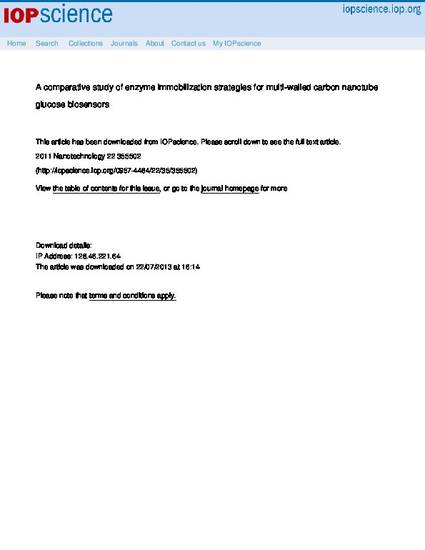
This work addresses the comparison of different strategies for improving biosensor performance using nanomaterials. Glucose biosensors based on commonly applied enzyme immobilization approaches, including sol-gel encapsulation approaches and glutaraldehyde cross-linking strategies, were studied in the presence and absence of multi-walled carbon nanotubes (MWNTs). Although direct comparison of design parameters such as linear range and sensitivity is intuitive, this comparison alone is not an accurate indicator of biosensor efficacy, due to the wide range of electrodes and nanomaterials available for use in current biosensor designs. We proposed a comparative protocol which considers both the active area available for transduction following nanomaterial deposition and the sensitivity. Based on the protocol, when no nanomaterials were involved, TEOS/GOx biosensors exhibited the highest efficacy, followed by BSA/GA/GOx and TMOS/GOx biosensors. A novel biosensor containing carboxylated MWNTs modified with glucose oxidase and an overlying TMOS layer demonstrated optimum efficacy in terms of enhanced current density (18.3 +/- 0.5 mu A mM(-1) cm(-2)), linear range (0.0037-12 mM), detection limit (3.7 mu M), coefficient of variation (2%), response time (less than 8 s), and stability/selectivity/reproducibility. H(2)O(2) response tests demonstrated that the most possible reason for the performance enhancement was an increased enzyme loading. This design is an excellent platform for versatile biosensing applications.
- REAL-TIME MEASUREMENT; SOL-GEL; AMPEROMETRIC BIOSENSORS; PLATINUM NANOPARTICLES; GOLD NANOPARTICLES; L-GLUTAMATE; OXIDASE; NAFION; ELECTRODES; ELECTROCHEMISTRY
Available at: http://works.bepress.com/jonathan_claussen/3/
